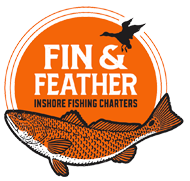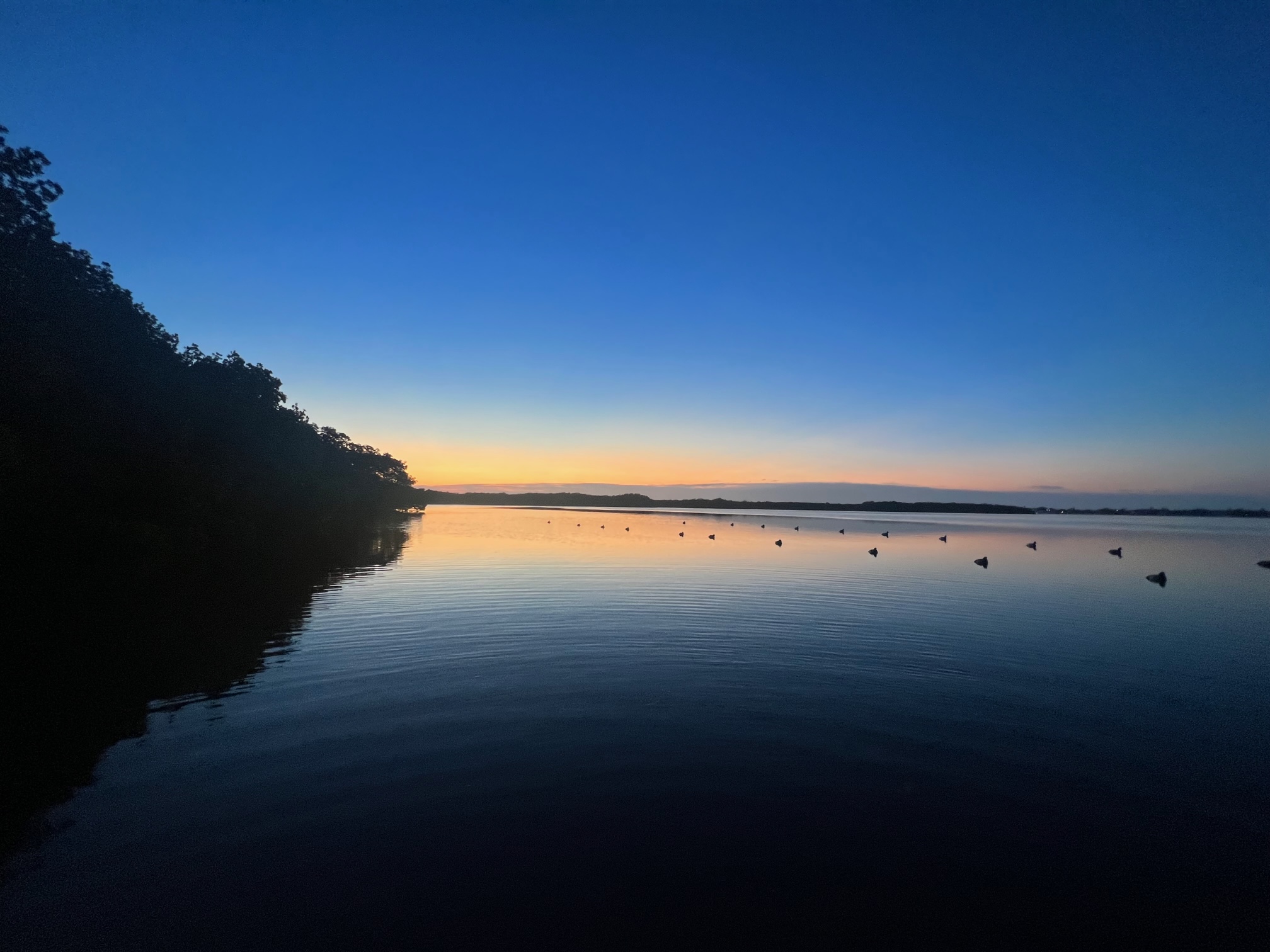Tampa Bay is one of Florida’s top inshore fishing destinations, offering a diverse and productive fishery that attracts fishermen from all over. Its vast estuarine system, fed by both freshwater rivers and the Gulf of Mexico, supports a healthy population of snook, redfish, trout, and tarpon. The variety of habitats—including grass flats, mangrove shorelines, oyster bars, and deeper channels—creates an environment where fish thrive year-round.
Fishermen have no shortage of ways to access these waters. The bay is well-suited for boats, but kayakers can quietly work the shallows, and shore fishermen can find productive spots along bridges, piers, and wading-friendly flats. With so many ways to get on the fish, Tampa Bay offers opportunities for both seasoned anglers and those just getting started.
Strong conservation efforts have played a key role in maintaining the health of this fishery. Habitat restoration, water quality improvements, and responsible fishing regulations have helped sustain fish populations and improve overall fishing conditions. These efforts have made Tampa Bay not only one of the most accessible inshore fisheries in Florida but also one of the most well-managed.
Inshore Fish Species in Tampa Bay
Tampa Bay is home to an impressive variety of inshore fish species, many of which can be caught throughout the year. Some are prized gamefish known for their challenging fights, while others are commonly encountered by fishermen working structure, flats, or deeper channels. Understanding the behaviors, habitats, and seasonal patterns of these fish can make a big difference when targeting them.
Primary Gamefish
Snook
Snook are among the most sought-after inshore fish in Tampa Bay, prized for their aggressive strikes and hard-fighting nature. They have a sleek, torpedo-shaped body with a distinct black lateral line running from their gill plate to the tail. Their coloration varies from silver to golden brown, depending on their environment.
These fish thrive around mangroves, docks, and bridge pilings, where they ambush baitfish and crustaceans. Snook are highly temperature-sensitive, making their seasonal patterns important for fishermen to understand. They bite well in the warmer months but become sluggish in the winter, often seeking refuge in deeper canals and warm-water outflows. A hard freeze can be devastating to the population, and strict regulations help protect them during vulnerable times.
Redfish
Redfish, also known as red drum, are strong, determined fighters that make them a favorite among inshore fishermen. They have a copper-bronze body with a distinctive black spot—or multiple spots—near the base of the tail.
These fish are commonly found tailing on shallow grass flats, especially in the early morning or late afternoon when they forage for crabs and shrimp. Redfish often school together, creating exciting sight-fishing opportunities. Slot-size restrictions help maintain a healthy population, with fishermen needing to carefully measure their catch. Larger bull reds, which exceed the slot, tend to stay in deeper waters but will occasionally push into the bay.
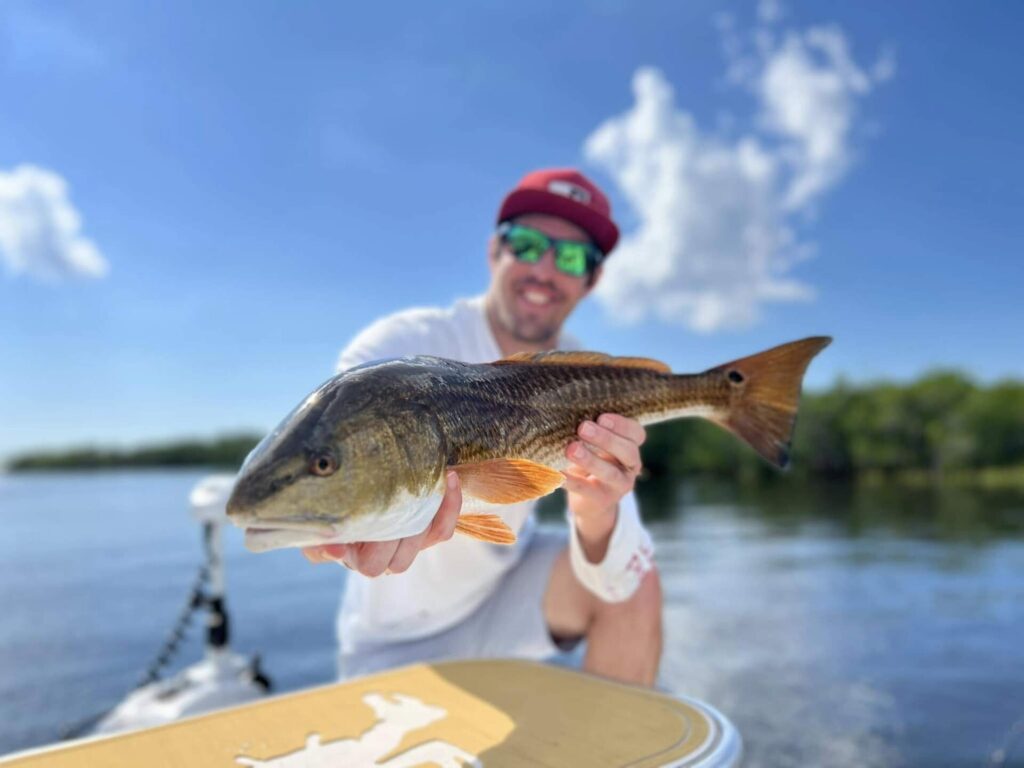
Spotted Seatrout
Spotted seatrout are a staple of inshore fishing in Tampa Bay, known for their speckled pattern along a silver body with a yellow-tinged mouth. They range in size from smaller “schoolie” trout to large “gator” trout, which are typically females over 20 inches.
These fish are most commonly found on grass flats, where they ambush baitfish, though larger specimens sometimes move into deeper channels. Cooler months bring bigger trout into shallower waters, making them more accessible. While they are aggressive feeders, they have soft mouths, so fishermen need to be careful when setting the hook to avoid losing them.
Tarpon
Tarpon are among the most prized inshore fish in Tampa Bay, known for their incredible aerial displays and sheer power. These fish have large, silver scales that give them a prehistoric appearance, and they can grow well over 100 pounds. Their massive mouths are adapted for gulping air, which allows them to survive in low-oxygen waters.
Juvenile tarpon can be found year-round in backwaters, canals, and estuaries, often in areas with structure and calm conditions. Larger migratory tarpon arrive in the bay during the spring and summer, following baitfish schools along the coast and gathering in deep passes. These fish put up exhausting battles, often leaping multiple times before breaking off or being landed.
Flounder
Flounder are unique among inshore fish due to their flat, oval-shaped bodies and ability to camouflage perfectly against the sandy bottom. They have both eyes on one side of their body, which allows them to lie motionless while waiting to ambush prey.
These fish are structure-oriented, often found near docks, rock piles, and sandy drop-offs where currents push baitfish and crustaceans into reach. Fall is typically the best time to target them, as they move out of the estuaries toward the Gulf. Fishermen targeting flounder use slow presentations, bouncing baits along the bottom to entice a bite.
Other Common Inshore Species
Jack Crevalle
Jack crevalle are built for speed and power, with a deep, streamlined body, a blunt head, and a forked tail that helps them move aggressively through the water. Their color ranges from bluish-green on top to a yellowish hue on the belly, with a distinctive black spot on the gill cover.
These fish are known for their relentless fight, often making long, drag-screaming runs when hooked. They travel in large, fast-moving schools and can be found throughout Tampa Bay, especially when baitfish are abundant. While they don’t have the best reputation for table fare, their raw strength and aggressive strikes make them a favorite for sport fishermen.
Sheepshead
Sheepshead are easily recognized by their vertical black-and-white stripes and a mouth full of human-like teeth, which they use to crush barnacles, crabs, and shellfish. Their deep, oval-shaped bodies are typically silver or gray, with a slightly darker back.
These fish are structure-oriented, commonly found around docks, bridge pilings, seawalls, and rock piles where they graze on encrusting organisms. They are notorious bait thieves, often nibbling away at hooks with precision before a fisherman even notices. Winter and early spring are prime times to target them as they move inshore to spawn.
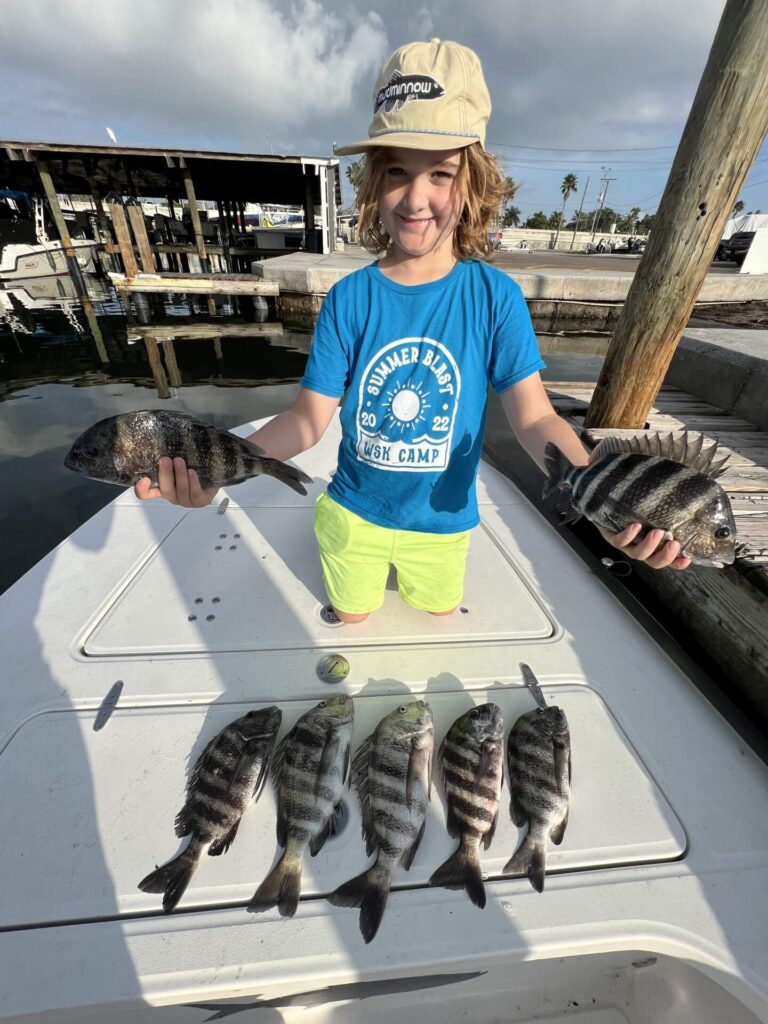
Mangrove Snapper
Mangrove snapper, or gray snapper, have a slender, torpedo-like body with dark reddish-brown to gray coloration that can change depending on their surroundings. They have sharp teeth and a keen eye for bait, making them one of the more challenging inshore fish to catch consistently.
They thrive around structure, including mangroves, docks, jetties, and artificial reefs, where they ambush small fish and crustaceans. During the summer months, larger mangrove snapper move into shallower areas, but they can be caught year-round in deeper channels. Their wary nature often requires light leader and a natural bait presentation.
Pompano
Pompano are small, fast-swimming fish with a deep, laterally compressed body and a forked tail designed for quick bursts of speed. Their coloration is mostly silver, with a yellowish tint on the belly and fins.
These fish move seasonally, preferring warmer waters. During cooler months, they can be found inshore on sandy flats, near passes, and along beaches, while in the summer, they push offshore. Pompano are often caught while fishing for other species, as they strike small jigs and shrimp with aggression.
Black Drum
Black drum are heavy-bodied fish with a high, arched back and vertical black stripes when young, which fade to a dull gray as they age. Their most distinctive feature is the set of barbels on their chin, which help them detect prey along the bottom.
Juvenile black drum are common inshore, often found around bridges, oyster beds, and muddy flats. Larger drum, sometimes exceeding 50 pounds, tend to stay in deeper waters but occasionally venture into the shallows. They are bottom feeders, primarily eating crabs, shrimp, and mollusks, and are known for their ability to produce a drumming sound by vibrating muscles against their swim bladder.
Ladyfish
Ladyfish have a long, slender, silver body with a deeply forked tail and a small, pointed head. They resemble miniature tarpon in both appearance and fighting style, often leaping wildly when hooked.
These fish are commonly found in schools, chasing baitfish on the flats and in deeper channels. While they aren’t prized as food, they are great for catch-and-release action and are sometimes used as cut bait for larger predators.
Spanish Mackerel
Spanish mackerel are sleek, fast-moving predators with a streamlined, silver body covered in distinct yellow spots. Their backs are a deep greenish-blue, and they have razor-sharp teeth built for tearing into baitfish.
These fish migrate through Tampa Bay seasonally, typically in the spring and fall when water temperatures are ideal. They move in large schools, ambushing bait near the surface. Fishermen often locate them by watching for diving birds or breaking baitfish, as they create chaotic feeding frenzies.
Bluefish
Bluefish are aggressive predators with a torpedo-shaped body, sharp teeth, and a bluish-green coloration that fades to silver on the belly. Though they aren’t as common in Tampa Bay as other species, they do show up seasonally, particularly in cooler months when they chase baitfish into inshore waters.
These fish are known for their aggressive strikes and powerful fights, often attacking lures with a vengeance. They are schooling fish that travel in packs, making it possible to catch multiple in a short period once a school is located.
Gag Grouper (Inshore Juveniles)
While gag grouper are typically thought of as offshore fish, juveniles can often be found in Tampa Bay’s shallower waters. They have a stout, robust body with a mottled brown and gray coloration that helps them blend into their surroundings.
Inshore juveniles often take up residence around structure, including rock piles, jetties, and bridges. As they grow, they move offshore to deeper waters. They are ambush predators, using their powerful jaws to crush crustaceans and smaller fish.
Tripletail
Tripletail are unique-looking fish with a deep, laterally compressed body and rounded fins that give them the appearance of having three tails. Their coloration is typically mottled brown or yellow, helping them blend in with floating debris.
These fish are often found around buoys, channel markers, crab trap floats, and other floating structures, where they hover near the surface, appearing almost motionless. Spotting them requires a keen eye, but once located, they readily take live bait and lures.
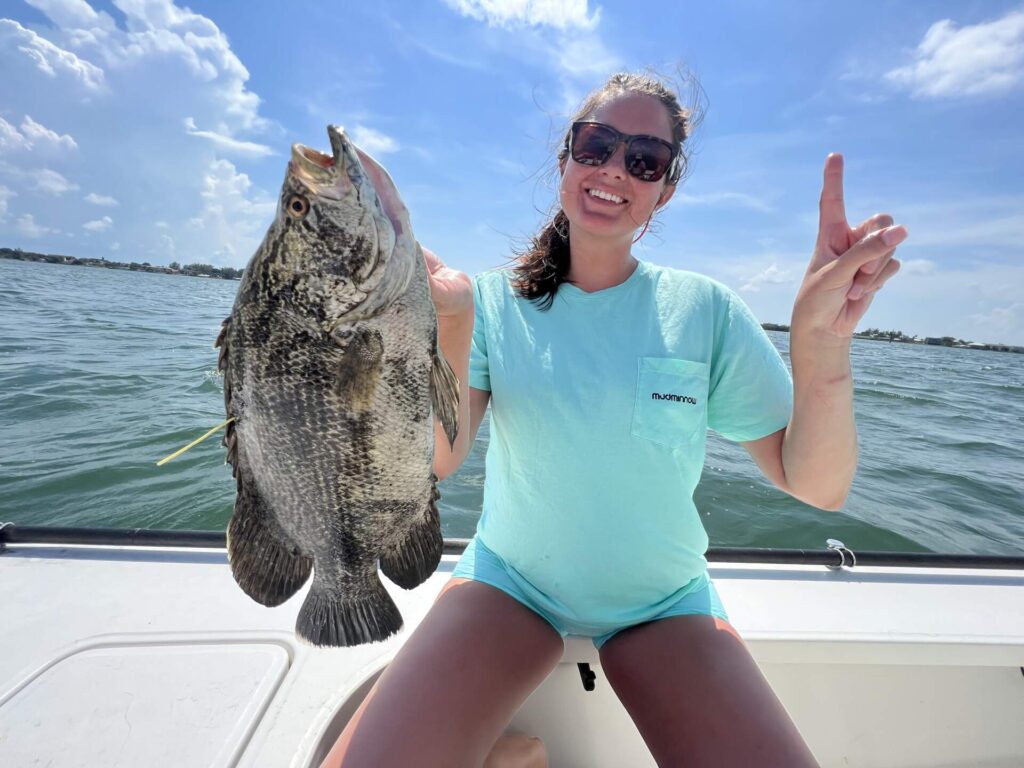
Cobia
Cobia are long, powerful fish with a broad head and dark brown coloration that can sometimes appear black. They have a distinctive elongated body and a slightly flattened head, giving them a shark-like appearance.
These fish are often seen following rays, sharks, and large turtles, using them as cover while searching for prey. In Tampa Bay, they move seasonally, with the best opportunities to catch them occurring in the spring and fall. They are strong fighters that make long runs and require heavier tackle to bring in successfully.
How Tides, Weather, and Seasons Affect Inshore Fishing
Fishing in Tampa Bay is never as simple as picking a spot and casting a line. Fish move based on conditions, and those conditions are always changing. Tides are one of the biggest influences, driving the movement of bait and dictating where predators position themselves. When water floods onto the flats, fish follow, taking advantage of the new hunting ground. As the tide falls, they reposition along drop-offs, channels, and structure where food is carried to them. But tides aren’t always the same—moon phases determine how strong they are, with full and new moons creating the most dramatic shifts. A strong tide can make fish aggressive, but too much current can also force them to adjust, seeking areas where they don’t have to fight against the flow. Knowing this helps a fisherman decide whether to target fish in open water, where they’ll be actively feeding, or in protected areas where they’re holding to avoid the strongest currents.
Temperature plays just as much of a role, and it’s one of the biggest reasons a spot that was productive one day can be empty the next. When winter cold fronts roll through, fish move to deeper water where conditions are more stable. Snook, in particular, are sensitive to the cold and retreat into canals and backwaters where they’re less exposed. Redfish and trout adapt by adjusting their feeding times, often becoming more active in the afternoons when the sun has had a chance to warm the shallows. In the summer, the pattern flips. Water that gets too warm forces fish to seek deeper, cooler areas during the hottest parts of the day. The best fishing shifts to early morning and evening, when temperatures are more comfortable and fish are actively feeding. If a fisherman isn’t considering these temperature changes, they’ll waste time fishing the wrong areas at the wrong times, wondering why nothing is biting.
Rainfall and storms add another layer of complexity. A sudden influx of freshwater can change salinity levels, pushing fish farther into the bay or drawing them toward brackish areas where baitfish are concentrated. After heavy rains, water clarity becomes an issue, and fish rely more on vibration and scent than sight. This can change how they respond to lures and bait presentations. Then there are hurricanes and tropical storms, which don’t just affect fishing for a few days—they can completely reshape the fishery. Sandbars shift, deep holes get filled in, and tidal flow changes in ways that force fish to relocate. The spots that held fish before might be empty, while new areas suddenly become productive. A fisherman who goes back to their usual spots after a storm without considering these changes is setting themselves up for frustration. Scouting after major weather events is just as important as reading the tides and temperatures.
No single factor determines where fish will be or how they’ll behave. Tides control movement, but temperature affects feeding, and weather patterns can override both. The best fishermen aren’t just looking at one element—they’re reading the full picture, recognizing how all these factors interact, and adjusting before the fish do. That’s the difference between getting lucky and consistently staying on fish.
Different Inshore Fishing Techniques
Success in inshore fishing comes down to adapting techniques to the environment. Fish behave differently in open flats, under docks, or along mangrove shorelines, and the right approach can mean the difference between a bite and an empty cast.
Sight fishing in clear, shallow water requires stealth. Fish spook easily, so slow movements, soft casts, and a well-placed bait in their path are key. On grass flats, covering water quietly by poling, drifting, or wading helps keep fish from scattering. Long casts and natural bait movement increase success, especially in shallower areas.
Docks and bridges hold snook, tarpon, and snapper, but precise casts are needed to reach them. Fish tuck into shadows and use pilings as ambush points, so getting a bait in tight without snagging structure is critical. Once hooked, heavy tackle is often necessary to keep fish from breaking off.
Mangrove fishing demands accuracy. Redfish and snook hide deep in the roots, and skipping baits under overhangs gets the best results. A well-placed cast leads to a quick strike, but pulling the fish out before it tangles in the branches is just as important.
Drifting allows fishermen to cover ground while presenting bait naturally, whether over a flat, along an oyster bar, or through a deep channel. Wade fishing takes this a step further, eliminating boat noise entirely and allowing a more subtle approach.
For reaching untouched waters, kayaks are a game-changer. Their stealth and maneuverability let fishermen slip into shallow backwaters, creeks, and areas too tight for boats, putting them on fish that rarely see pressure.
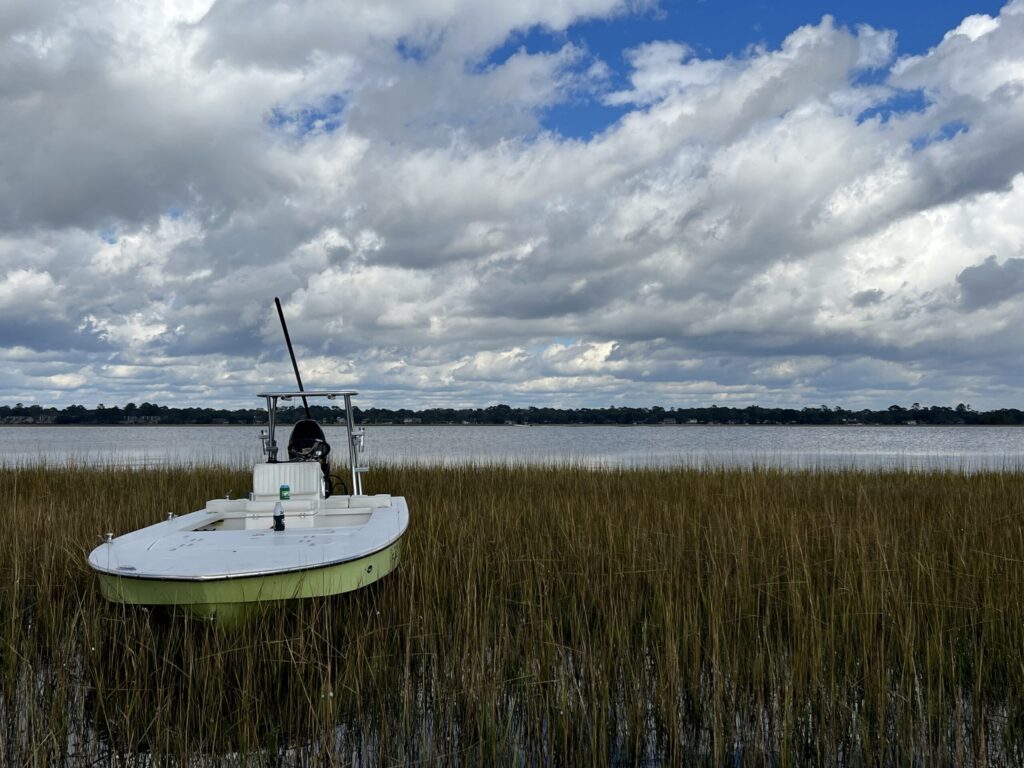
Bait Considerations for Tampa Bay Inshore Fishing
The right bait can make or break a day of fishing. In Tampa Bay, both live and artificial baits have their place, but knowing when to use each, what species work best, and how to keep bait in top condition can give fishermen a serious advantage.
Live Bait vs. Artificial: When to Use Each
- Live bait is best when fish are actively feeding but hesitant to strike lures. It works well in clear water and during times when natural baitfish are abundant.
- Artificial lures shine in murky water, when covering ground quickly is needed, or when baitfish aren’t easy to catch. Soft plastics, topwaters, and suspending baits can mimic live bait when presented correctly.
Common Live Bait Species
- Pilchards (Whitebait): The go-to for snook, trout, and redfish. Best in warmer months when bait schools are plentiful.
- Threadfin Herring: Slightly larger than pilchards, great for snook and tarpon but more fragile in a baitwell.
- Pinfish: Hardy bait ideal for redfish, snook, and larger trout. Works well around structure.
- Shrimp: Effective year-round for everything from sheepshead and snapper to trout and redfish. A great option when other live bait is scarce.
- Crabs: Perfect for tarpon and permit, especially during their seasonal migrations.
- Mullet: Excellent for big snook and redfish. Juvenile mullet work well live, while larger ones are often used as cut bait.
Keeping Live Bait Alive
- On boats: A well-aerated baitwell with consistent water flow is crucial. Overcrowding kills bait quickly.
- For shore anglers: Portable aerators and flow-through bait buckets work well, but keeping bait in the shade and swapping water frequently helps prevent stress.
Seasonal Bait Movements
- Spring and summer: Pilchards, threadfins, and mullet are abundant along grass flats and near passes.
- Fall: Baitfish start migrating toward deeper channels as water cools, making cast-netting harder.
- Winter: Shrimp and pinfish become more reliable as many baitfish leave inshore waters.
Cut Bait: Fresh vs. Frozen
- Fresh-cut bait (mullet, ladyfish, or pinfish) is far more effective, keeping its scent and oils intact.
- Frozen bait is convenient but often mushy, making it easier for fish to pick apart. Salting or brining improves texture and durability.

Environmental Factors That Impact Fishing
Tampa Bay’s inshore fishery is shaped by constant environmental changes, some temporary and others long-term. Water clarity can shift within hours due to wind, tides, or rain, affecting how fish hunt and where they position themselves. Clear water allows for sight fishing but also makes fish more cautious, while murky conditions force them to rely on vibration and scent. A hard rain can push freshwater into the bay, altering salinity and driving some species farther into stable waters.
Habitat quality plays just as big of a role. Once-reliable grass flats have declined in some areas, forcing fish to relocate to remaining seagrass beds or adopt different patterns around oyster bars and artificial reefs. These structures now hold more fish than ever, acting as essential feeding zones where bait congregates. But habitat loss is only part of the equation—major disruptions like red tide can wipe out fish populations in days, scattering survivors into unaffected areas. Even after the water clears, some fish never return to previously productive spots.
On top of natural shifts, human impact has changed the fishery in ways that can’t be reversed. Dredging alters tidal flow, seawalls replace feeding areas, and increased boat traffic pushes fish into less pressured zones. While some fishermen return to the same spots out of habit, those who adapt to these ongoing changes are the ones who keep finding fish.
Challenges and Common Mistakes in Inshore Fishing
- Tides control everything. If the water isn’t moving, neither are the fish. Check tide flow, not just high or low.
- Slow down your retrieve. Fish rarely chase a meal that looks like it’s in a hurry. Let the bait move naturally.
- Don’t blow your shot. Noise spooks fish on the flats. Approach quietly, cast smoothly, and don’t rush.
- Small structure holds big fish. A slight drop-off, an oyster bar, or a grass edge can be better than a crowded dock.
- Handle with care. Wet hands, quick release, proper support—dead fish don’t grow bigger.
- Water temp matters. A few degrees can push fish into deep holes or bring them onto the flats. Watch for changes.
- Missed a strike? Stay ready. Pausing or twitching the bait often gets a second hit.
- Don’t waste time in dead water. If nothing happens after a few adjustments, move. Fish aren’t waiting for you.
Conservation and Responsible Fishing
Protecting Tampa Bay’s fishery starts with smart catch and release. Snook, redfish, and tarpon are among the most targeted inshore species, but when they aren’t in season or aren’t being kept, proper handling makes all the difference. Keeping fish in the water as much as possible, using wet hands to avoid damaging their slime coat, and supporting their body during release helps ensure survival. Deep-water species brought up too fast can suffer from barotrauma, and if they aren’t properly vented or returned using a descending device, they often don’t make it. Beyond fish handling, protecting seagrass beds by avoiding prop scarring and staying aware of shallow water zones helps preserve vital habitat. While fishing regulations exist to prevent overharvest, conservation goes beyond the law—every fisherman has a role in keeping the bay’s ecosystem healthy for the future.
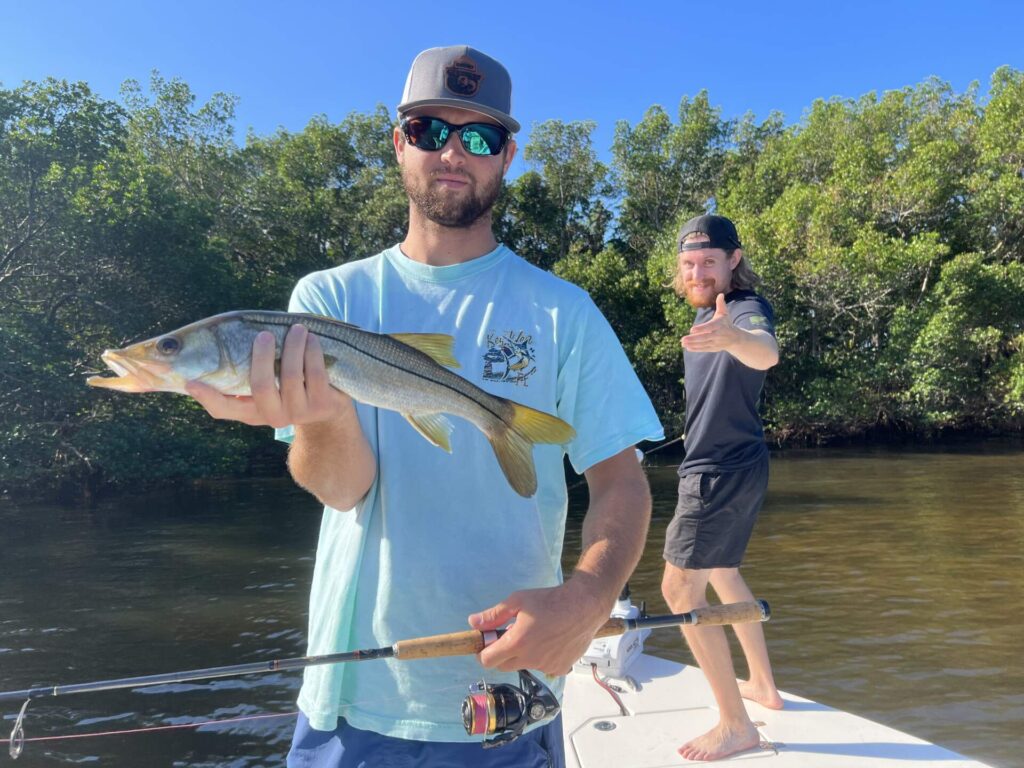
When to Consider a Guide for Tampa Bay Inshore Fishing
Hiring a guide takes the guesswork out of inshore fishing. Instead of spending time figuring out tides, bait, and fish movement, a good captain puts you right where the action is. Guides know the best spots for each season, adjust to changing conditions, and help anglers of all skill levels hook into quality fish. Whether you’re after snook, redfish, or tarpon, fishing with someone who knows the water firsthand makes the difference between hoping for a bite and landing fish consistently.
A guided trip isn’t just about catching fish—it’s about learning. Expect insight on reading water conditions, choosing the right bait, and refining techniques that make you a better fisherman long after the trip ends. The right guide fits your style of fishing, whether that’s sight casting the flats, working mangroves, or targeting deeper structures. Before booking, it’s worth asking about the approach, what’s included, and what gear to bring to get the most out of the experience.
At Fin & Feather Inshore Fishing, Capt. Ken combines years of local knowledge with a passion for putting clients on fish. Whether you’re a seasoned angler or new to the sport, he tailors each trip to make it both productive and enjoyable. Tampa Bay’s fishery is always changing, but with the right guide, you’re always in the right place at the right time. Book your trip today and experience Tampa Bay fishing at its best!
